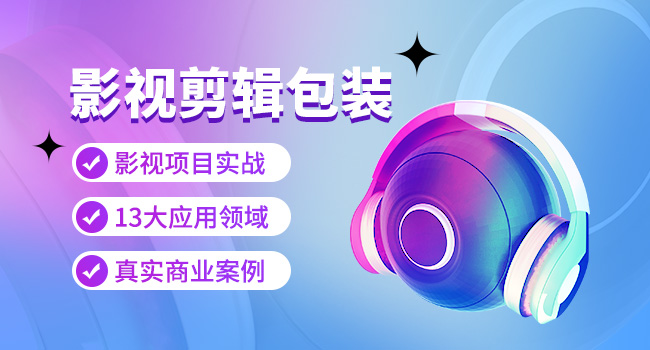你所不知道的Lambda表達式和常用的函數式接口
你所不知道的Lambda表達式和常用的函數式接口
推薦答案
同學,您好!你所不知道的Lambda表達式和常用的函數式接口
一. 什么是Lambda表達式
Lambda表達式是JDK1.8中新增的一種方式,用于替代匿名內部類,該表達式可以讓開發人員更加關注于具體需要傳遞的方法,而不是因為需要傳遞一個方法而創建一個對象。
二. Lambda表達式
1. 基本語法
Lambda省去?向對象的條條框框,格式由3個部分組成:
參數部分
箭頭
代碼塊
比如:(參數類型 參數名稱) -> { 代碼語句 }
2. 格式說明
?括號內的語法與傳統?法參數列表?致:?參數則留空;多個參數則?逗號分隔;
-> 是新引?的語法格式,代表指向動作;
?括號內的語法與傳統?法體要求基本?致。
3. Lambda的省略格式
所謂的Lambda表達式的省略原則是:可推導即可省略。
Lambda強調的是“做什么”?不是“怎么做”,所以凡是可以根據上下?推導得知的信息,都可以省略。
3.1 省略規則
在Lambda標準格式的基礎上,使?省略寫法的規則為:
?括號內參數的類型可以省略;
如果?括號內有且僅有?個參,則?括號可以省略;
如果?括號內有且僅有?個語句,則?論是否有返回值,都可以省略?括號、return關鍵字及語句、分號。
4. Lambda的使用前提
Lambda的語法?常簡潔,完全沒有?向對象復雜的束縛,但是使?時有?個問題需要特別注意:
使?Lambda必須具有接?,且要求接?中有且僅有?個抽象?法。 ?論是JDK內置的
Runnable 、 Comparator 接?還是?定義的接?,只有當接?中的抽象?法存在且唯?時,才可以使用Lambda
2. 使?Lambda必須具有上下?推斷。 也就是?法的參數或局部變量類型必須為Lambda對應的接?
類型,才能使?Lambda作為該接?的實例。
5. 常用函數式接口
JDK提供了?量常?的函數式接?以豐富Lambda的典型使?場景,它們主要在 java.util.function
包中被提供. 常用的函數式接口包括以下四個。
5.1 Supplier接?
java.util.function.Supplier 接?僅包含?個?參的?法: T get() 。?來獲取?個泛型參數,可以指定類型的對象數據。由于這是?個函數式接?,這也就意味著對應的Lambda表達式需要“對外提供”?個符合泛型類型的對象數據。
5.1.1 基本使用方式如下:
public class SupplierDemo {
// 為了獲取一個int類型的數據
private static int getNum(Supplier supplier) {
// get方法 -- 返回一個指定數據類型 T 的數據
return supplier.get();
}
public static void main(String[] args) {
// int num = getNum(new Supplier() {
// @Override
// public Integer get() {
// return 50;
// }
// });
System.out.println(getNum(() -> 50));
// 1. 獲取30 60 兩個數字中的最大值
// getNum(new Supplier() {
// @Override
// public Integer get() {
// return Math.max(30, 60);
// }
// });
getNum(()->Math.max(30, 60));
// 有一個數組
int[] nums = {1,5,4,8,4,51,2,1,6,8};
// 通過getNum方法獲取數組的最大值
// getNum(new Supplier() {
// @Override
// public Integer get() {
// Arrays.sort(nums);
// return nums[nums.length - 1];
// }
// });
int num = getNum(() -> {
Arrays.sort(nums);
return nums[nums.length - 1];
});
System.out.println(num);
}
}
5.2 Consumer接?
java.util.function.Consumer 接?則正好與Supplier接?相反,它不是?產?個數據,?是消費?個數據,其數據類型由泛型決定。
Consumer 接?中包含抽象?法 void accept(T t) ,意思是說消費?個執?泛型的數據
Consumer 接?中包含默認?法:andThen
如果?個?法的參數和返回值全都是 Consumer 類型,那么就可以實現效果:消費數據的時候,?先做?個操作, 然后再做另?個操作,實現組合。?這個?法就是 Consumer 接?中的default?法 andThen
5.2.1 下?是JDK的源代碼:
default Consumer andThen(Consumer after) {
Objects.requireNonNull(after);
return (T t) -> { accept(t); after.accept(t); };
}
基本使用方式如下:
public class ConsumerDemo {
// 使用一個指定的String類型的數據
private static void useString(Consumer consumer, String string){
consumer.accept(string);
}
private static void useString(Consumer consumer, Supplier supplier) {
consumer.accept(supplier.get());
}
// 返回的Consumer對象的目的 -- 使用accept方法接收參數,傳遞給first和second使用
private static Consumer andThen(Consumer first, Consumer second){
return new Consumer() {
@Override
public void accept(String s) {
first.accept(s);
second.accept(s);
}
};
}
private static void andThenTest(Consumer first, Consumer second, String string){
// Consumer then = first.andThen(second);
// then.accept(string);
// 前后兩個接口對象之間,沒有數據上的聯系
// 兩個接口 分別處理的都是原本的數據
first.andThen(second).accept(string);
System.out.println("---------");
Consumer consumer = andThen(first, second);
consumer.accept(string);
}
public static void main(String[] args) {
// useString(new Consumer() {
// @Override
// public void accept(String s) {
// System.out.println(s.length());
// }
// }, "lambda");
// useString((String s)->{
// System.out.println(s.length());
// }, "lambda");
useString(s->System.out.println(s.length()), "lambda");
// useString(s-> System.out.println(s), "lambda");
// useString(System.out::println, "lambda");
useString(s-> {
System.out.println(s.concat(Integer.valueOf(s.length()).toString()));
System.out.println(s + s.length());
}, "lambda");
useString(s->{
System.out.println(s.length());
},()->{
return "123456oiuytr";
});
andThenTest(s -> System.out.println(s.toUpperCase()),
s->System.out.println(s.substring(0, 3)), "lambda Exp");
}
}
5.3 Predicate接?
有時候我們需要對某種類型的數據進?判斷,從?得到?個boolean值結果。這時可以使
?java.util.function.Predicate接?。
Predicate 接?中包含?個抽象?法: boolean test(T t)
該接口也存在三個默認的方法,分別是and 、 or 和negate, 分別表示與 、或 、非三種邏輯處理。
5.3.1 接口代碼示例:
public class PredicateDemo {
private static boolean testMethod(Predicate predicate, String s){
// test方法返回一個boolean類型的數據
return predicate.test(s);
}
private static boolean andMethod(Predicate first, Predicate second, String s){
return first.and(second).test(s);
}
private static boolean orMethod(Predicate first, Predicate second, String s) {
return first.or(second).test(s);
}
private static boolean negateMethod(Predicate predicate, String s) {
return predicate.negate().test(s);
}
public static void main(String[] args) {
// 1. 判斷一個字符串是否是由txt結尾的
// boolean result = testMethod(new Predicate() {
// @Override
// public boolean test(String s) {
// return s.endsWith("txt");
// }
// }, "newFile");
// boolean result = testMethod((String s)->{
// return s.endsWith("txt");
// }, "newFile");
boolean result = testMethod(s->s.endsWith("txt"), "newFile");
System.out.println(result);
boolean r1 = andMethod(s -> s.length() > 6,
s -> s.startsWith("a"), "asijhgvbnm");
boolean r2 = orMethod(s -> s.length() > 6,
s -> s.equals("abcd"), "asdfghjkl");
boolean r3 = negateMethod(s -> s.endsWith("a"), "asdfghjkl");
System.out.println(r1 + " - " + r2 + " - " + r3);
}
}
5.4 Function接?
java.util.function.Function接??來根據?個類型的數據得到另?個類型的數據,前者稱為前置條件,后者稱為后置條件。
Function 接?中最主要的抽象?法是: R apply(T t) ,根據類型T的參數獲取類型R的結果。
Function接?中有?個默認的andThen?法,?來進?組合操作。
5.4.1 基本使用方式如下
public class FunctionDemo {
private static void applyMethod(Function function, String s){
Integer apply = function.apply(s);
System.out.println("從字符串" + s + "中獲取的integer類型數據是:" + apply);
}
private static Function andThen(Function first, Function second){
// T = String; R = Integer; V=Boolean
// String --> Boolean
return new Function() {
@Override
public Boolean apply(String s) {
// String --> Integer
Integer apply = first.apply(s);
// Integer --> Boolean
Boolean apply1 = second.apply(apply);
return apply1;
}
};
}
private static void andThenMethod(Function first, Function second, String s){
Function then = first.andThen(second);
// 因為andThen方法在實現的時候 前面一個的結果給后面一個處理
// 前者T R --> 后者 R V ==> T --> V
Boolean apply = then.apply(s);
System.out.println(apply);
System.out.println("------");
Function function = andThen(first, second);
Boolean b = function.apply(s);
System.out.println(b);
}
public static void main(String[] args) {
// applyMethod(new Function() {
// @Override
// public Integer apply(String s) {
// return s.indexOf("a");
// }
// }, "fashjkl");
// applyMethod((String s)->{
// return s.indexOf("a");
// }, "fashjkl");
applyMethod(s->s.indexOf("a"), "fashjkl");
andThenMethod(s-> s.length(),
i -> i > 20, "sadfghjkl;");
// andThenMethod(String::length,
// i -> i > 20, "sadfghjkl;");
}
}
現在你學會Lambda表達式怎么用了嗎?

熱議問題


















 京公網安備 11010802030320號
京公網安備 11010802030320號